NIL
Top 2026 recruits talk NIL at Rivals Five
Go to On3 Home About On3AboutAdvertisersCareersContact SupportCustomer ServicePrivacy PolicyChildren’s Privacy PolicyTerms of Service On3 ConnectTwitterFacebookInstagram The On3 App for college sports fans: © 2025 On3 Media, Inc. All rights reserved. On3 is a registered trademark of On3 Media, Inc. 2
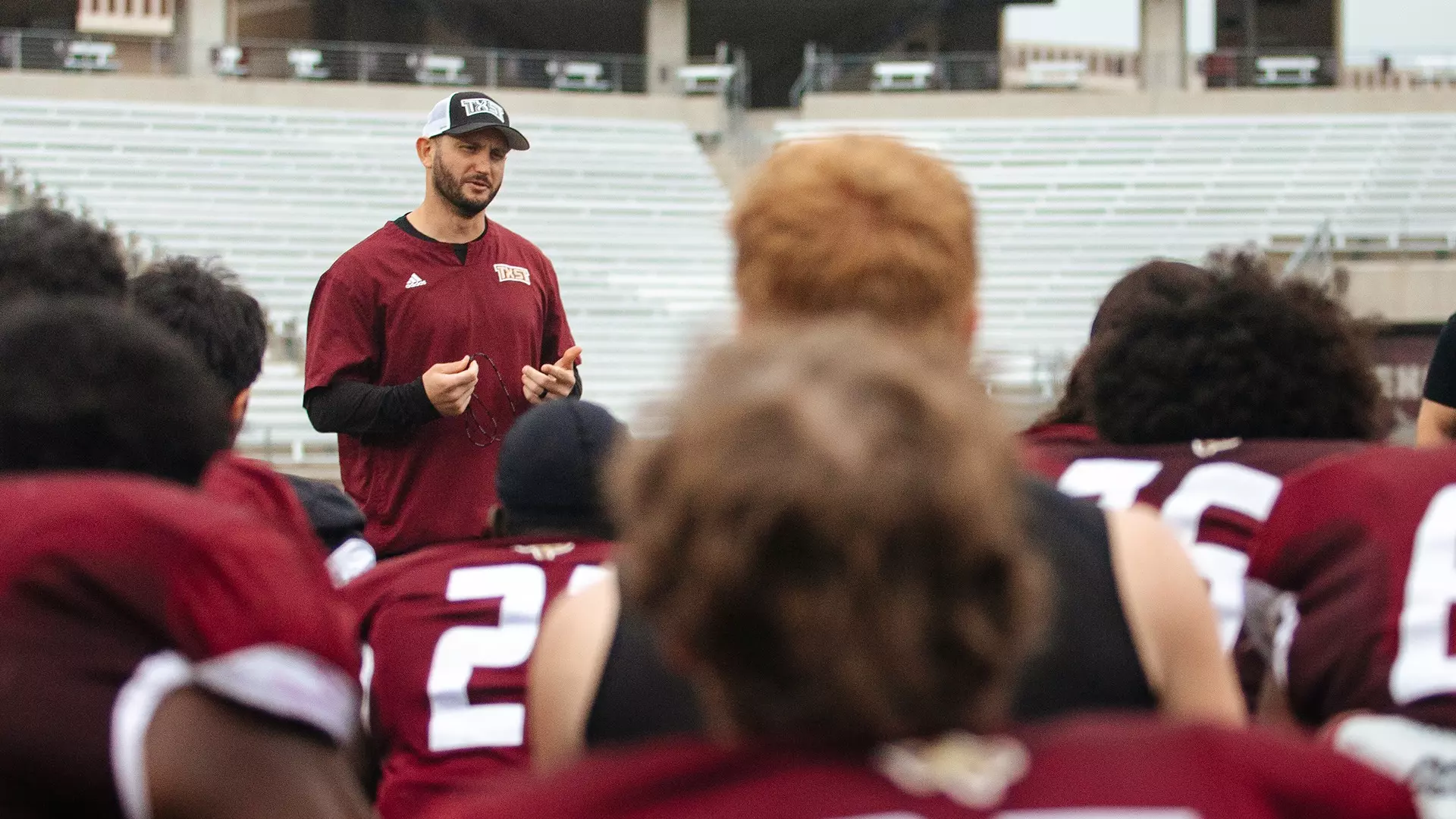
NIL
Former Standout Linebacker Kwiatkoski Giving Back to His Alma Mater
Story Links MORGANTOWN, W.Va. – Nick Kwiatkoski never expected to become an NFL player when he signed to play with West Virginia University in 2011, but circumstances can sometimes change. Kwiatkoski believes the growth and development that he made during his five years spent at WVU helped turn him into the person […]
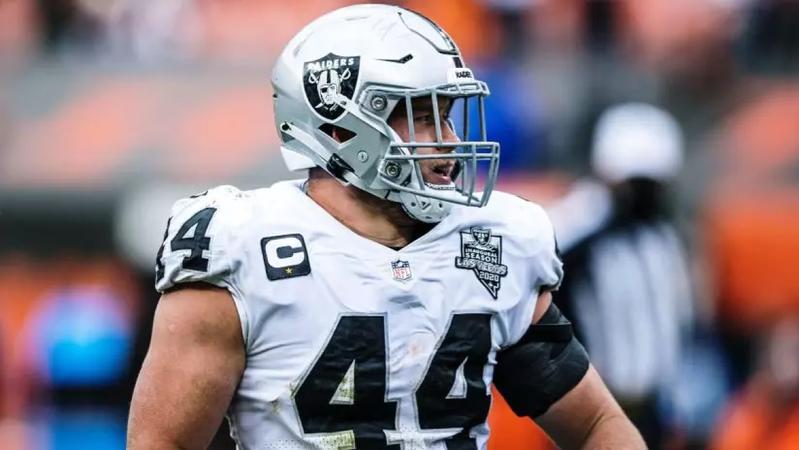
MORGANTOWN, W.Va. – Nick Kwiatkoski never expected to become an NFL player when he signed to play with West Virginia University in 2011, but circumstances can sometimes change.
Kwiatkoski believes the growth and development that he made during his five years spent at WVU helped turn him into the person he’s become today, and consequently, he feels compelled to give something back to the place that has done so much for him.
Working with Kyle Poland and John Patterson in the Mountaineer Athletic Club, Kwiatkoski recently made a significant leadership gift to the football program that now places him in the Summit Society – WVU athletics’ philanthropic giving group which recognizes donors making transformational gifts to help impact Mountaineer athletics.
For Kwiatkoski, it was about helping a place that really helped him during an important time in his life.
“I had a blast during my time there,” he said recently. “I never expected to get a Division I offer and when I arrived at West Virginia, I wasn’t one of those guys who was saying, ‘I’m going to go to the NFL.’ I was just happy to be there when I got on campus, and just going through (strength and conditioning coach) Mike Joseph‘s program in the weight room it brought out a side of me I didn’t know I had.

A native of Bethel Park, Pennsylvania, Kwiatkoski falls into the category of overlooked and underappreciated Pittsburgh area players who made a name for themselves at nearby West Virginia. Standouts such as Major Harris, Mike Logan, Marc Bulger and Charles Fisher were outstanding Steel City area players who, for one reason or another, didn’t attract much interest from Pitt.
Kwiatkoski’s personal story is very similar to theirs.
“Growing up, (the top) guys from the WPIAL were going to Pitt,” he recalled. “Their facilities were 15 minutes down the road from me and there weren’t too many guys going to West Virginia from Pittsburgh.
“You have a lot of great football schools in this area and, of course, high school football is huge, too. Growing up in Pittsburgh, you saw the Flying WV around some, but it was definitely outweighed by Pitt and Penn State.”
Penn State’s Tom Bradley once made a visit to his high school, but it was West Virginia that saw his potential. Kwiatkoski got a call one day from Mountaineer assistant coach Dave McMichael and soon he handed Kwiatkoski off to assistant coaches Jeff Casteel and Steve Dunlap.
After a good junior season that included a place on the Pittsburgh Post-Gazette’s Preseason Fabulous 22 List, Kwiatkoski suffered a back injury and missed the first two months of his senior season. Once he called Casteel to commit to West Virginia, the Mountaineers continued to remain committed to him after his injury.
Then, when Dana Holgorsen took over the Mountaineer program in 2011, Kwiatkoski was among the group of talented football players gifted to him from Bill Stewart’s staff.
Kwiatkoski played for three different defensive coordinators during his college career, finishing up with Tony Gibson in 2015. His best season came in 2014 as a junior when he made 103 total tackles and had 11 ½ tackles for losses while playing outside linebacker.
His four-year totals include 303 total tackles, 28 tackles for loss, six interceptions and two sacks, while demonstrating the versatility on special teams desired by pro scouts.
“I played multiple positions at West Virginia and went through a handful of coordinators, from Joe DeForrest to Keith Patterson to Tony Gibson,” Kwiatkoski recalled.
“I played a few different schemes at West Virginia. I was recruited by Coach Casteel to play in the 3-3-5 as a safety, and oddly enough, I think those two years with Coach DeForrest and Coach Patterson it was kind of a multiple 3-4 defense, which is ultimately what I ended up playing a lot during my NFL career. Then it was back to the 3-3-5 with Gibbie during my senior year,” he explained. “Playing different positions and different schemes definitely helped me gain an overall understanding of defenses.”
Following his senior year in 2015, Kwiatkoski was invited to play in the Senior Bowl and then after the NFL Scouting Combine in Indianapolis, the Chicago Bears selected him in the fourth round of the 2016 NFL Draft as the 113thoverall pick.
However, Kwiatkoski’s rookie season with the Bears got off to an inauspicious start. He injured his hamstring during the first day of full pads and missed most of training camp. Although he signed a four-year, $2.91 million contract, only the signing bonus portion of it was guaranteed.
“As a rookie, you are going into a completely new environment, and you see guys get cut all the time. For me, I was pretty confident I was going to make the team, but there was some uncertainty there until week one,” he recalled.
“You are watching good players get let go and you are standing there on the sidelines watching, so it was definitely a sense of doubt,” Kwiatkoski admitted. “I didn’t know how anything worked, and the roster is getting cut down every day.”
But he made the team and ended up starting seven games during his rookie season in 2016. A year later, Pro Football Focus rated Kwiatkoski the league’s third-best inside linebacker in run-stop percentage, and he continued to be an important contributor on the Bears’ defense until signing a lucrative three-year free agent deal with the Las Vegas Raiders in 2020.
He played two full seasons with the Raiders, another with the Atlanta Falcons and was in Pittsburgh’s training camp in 2023 when he was released.
Although Kwiatkoski has never officially submitted his retirement papers to the NFL, he says he is pretty much done with pro football.
“There are things I wished would have gone differently here and there, but overall, I enjoyed my career, and it was more than I ever expected when I went to college at West Virginia,” he noted. “I feel like I got what I wanted out of it and for seven years, I had a blast, honestly.”
Kwiatkoski has enough service time to receive an NFL pension, so he said he’s taking his time to consider what he wants to do next with his life.
His permanent residence is in Las Vegas, and he also owns an apartment in Pittsburgh where he frequently spends his time with family and friends.
“I’m enjoying retirement right now,” he says. “I feel great physically. Thank God I had no major, major injuries. It was all minor stuff, so overall, I feel great.
“I want to do something I enjoy,” he adds. “It would be great to remain close to football, but in my mind that’s not a need. I’m still trying to figure that out. It’s not like I’m looking for something and can’t find it, but more so finding the right thing.”
Up until the time he was released by the Steelers, football was a year-round proposition for a good portion of his life.
“Last year was the first year I didn’t go to a training camp,” he pointed out. “After Pittsburgh let me go, I still trained every day, and I kept in shape last year, but I’d be lying if I told you I was working out as hard as I would if I was going to training camp.”
Today, Kwiatkoski has more time to follow his favorite college team. He said he’s encouraged with the direction the Mountaineer program is taking under Rich Rodriguez, whom he met for the first time earlier this summer.
It was Rodriguez’s success in the mid-2000s that got Kwiatkoski interested in West Virginia football in the first place.
“I’m excited,” he said. “I got to spend some time with Rich Rod a few weeks ago when they had a camp, and I crossed paths with a lot of guys on his staff. It’s encouraging to see them put it out there on the field.
“I’ve gotten to know Pat White and some of the other former players and that’s something I love about West Virginia,” Kwiatkoski continued. “I feel like among the players, past, present and future, somehow relationships are built with the guys. I remember when I was playing for the Raiders and Pat was coaching with the Chargers and just seeing him after games and talking to him. There is always that West Virginia tie that bring players and coaches together.
“Kyzir White, when he was with the Chargers, we would talk after games, and I also got to play against Tavon (Austin) once or twice. I traded jerseys with some of the West Virginia guys, and I have those in my house in Vegas.”
Kwiatkoski admits he is still wrapping his arms around the business nature of college sports these days, but he understands the importance of supporting his alma mater.
Fortunately, he is in a financial position to do so.
“(WVU) had such a big impact on me as a football player and as a person,” Kwiatkoski explained. “There was a lot of uncertainty when I arrived on campus with my injury, and then for them to stick with me, I turned into an NFL player while I was there, mentally and physically. I owe a lot for that.
“With the state of college football these days, it’s always good to give back and help them build what they’re trying to build, whatever that may be,” he said. “I don’t know all of the ins and outs today and I’m curious to sit down and learn more about it.”
Kwiatkoski indicated the details of his contribution are still being worked out.
NIL
House subcommittee advances NIL framework for college sports
A House subcommittee on Tuesday advanced legislation that seeks to address recent seismic changes in how college athletes are compensated. The legislation, introduced last week by Rep. Gus Bilirakis, R-Fla., would create national standards for name, image and likeness deals, while preempting a patchwork of existing state laws on the topic. It would bar student-athletes […]

A House subcommittee on Tuesday advanced legislation that seeks to address recent seismic changes in how college athletes are compensated.
The legislation, introduced last week by Rep. Gus Bilirakis, R-Fla., would create national standards for name, image and likeness deals, while preempting a patchwork of existing state laws on the topic. It would bar student-athletes from being considered as university employees and carve out exceptions to antitrust law for conferences and the NCAA.
The bill advanced out of the House Energy and Commerce Subcommittee on Commerce, Manufacturing and Trade on a party-line, 12-11 vote. Democrats on the subcommittee opposed the measure, saying it would transfer power back to the NCAA and impede progress made over the last few years by student-athletes.
“We’re here today to consider the SCORE Act, but a title like the NCAA Wish List Act would better reflect its true objectives,” said Rep. Yvette D. Clarke, D-N.Y.
Next the full committee is expected to consider the proposal, which was also referred to the Education and Workforce Committee. Its prospects on the House floor are unclear, but it already has the backing of two Democratic co-sponsors: Reps. Janelle Bynum of Oregon and Shomari Figures of Alabama.
The latest congressional effort to create a nationwide NIL standard comes just a month after a federal judge approved a settlement resolving antitrust lawsuits brought by former Division 1 athletes. Those athletes sought damages for NIL deals they were forced to forgo and the ability to share in revenues generated from broadcasting.
The settlement now allows universities to directly share revenues with college athletes, capped at roughly $20.5 million per school for the 2025–2026 season, in a watershed change for college athletics. But lawmakers agreed Tuesday that athletes and universities still face a confusing mishmash of NIL policies across the country.
“The fractured NIL landscape that has developed in recent years has left athletes, schools and conferences without certainty or guardrails,” said Rep. Brett Guthrie, R-Ky., who chairs the full Energy and Commerce Committee. “Across the country, athletic departments are trying to compete in a system that is anything but fair or stable, where chaos makes it difficult to understand, let alone meet their compliance obligations.”
The debate over NIL began more than a decade ago, when former UCLA basketball player Ed O’Bannon sued the NCAA after his likeness was featured in the 2009 edition of EA Sports’ NCAA basketball video game. In 2019, California passed a law allowing student-athletes in the state to make money on NIL deals, and in the intervening years many other states have followed suit.
Interest in NIL only increased when the NCAA implemented new transfer rules that made it easier for players to jump from one school to another, shopping the best options without the past penalty of having to miss a year of playing time. Since the rule change, boosters at major schools — particularly those with renowned basketball and football players — are competing for top talent, sometimes offering north of a $1 million a year in deals for college athletes.
The legislation, according to its proponents, would level the playing field by requiring all eligible universities to maintain at least 16 varsity sports teams and would require schools to report on revenue from media rights and on fees charged to students used for athletic programs.
“With revenue-sharing as the new norm in college athletics, we must ensure that all athletic programs, from powerhouse football teams to smaller sports, have the tools to thrive,” Guthrie said.
Democrats on the subcommittee argued the measure goes too far in shielding the NCAA from antitrust lawsuits and not far enough when it comes to benefits and protections for students. Rep. Lori Trahan, D-Mass., herself a former Division 1 volleyball player at Georgetown University, pressed for changes to the bill.
“As currently drafted, the SCORE Act would grant sweeping power to the NCAA and athletic conferences, power that comes at the expense of the very athletes who make college sports possible,” Trahan said.
She proposed carving out room for states to “go further in protecting college athletes and strengthening their rights if states so choose,” withdrawing an amendment to that effect after receiving assurances that Republicans would work with her to find “common ground.”
Other amendments from her and Clarke were voted down. California Rep. Kevin Mullin offered, then withdrew, an amendment that would ask the Federal Trade Commission to study the idea of creating an independent entity to regulate agents, while also clarifying that agents have a fiduciary duty to their student-athletes.
NIL
Which 68 teams make our first 2026 Bracketology, and which teams may be hoping for NCAA Tournament expansion
With college basketball’s 2025-26 rosters now mostly set, a clearer picture of the season ahead is beginning to emerge. On the heels of a historic NCAA Tournament tally for the SEC, a couple of other power conferences are assembling their horses. The Big Ten has nine of the top 30 and 14 of the top […]

With college basketball’s 2025-26 rosters now mostly set, a clearer picture of the season ahead is beginning to emerge. On the heels of a historic NCAA Tournament tally for the SEC, a couple of other power conferences are assembling their horses.
The Big Ten has nine of the top 30 and 14 of the top 50 in Bart Torvik’s preseason rankings, while the Big 12 has eight of the top 35. The ACC and Big East don’t have quite such strong collections, but they have amassed enough talent to, at minimum, match their combined tally of nine NCAA Tournament bids from 2025.
Returning to the record-setting threshold of 14 entrants to the Big Dance will be a tough task for the SEC, but it certainly won’t be impossible as the league heads toward a new season with 13 of the nation’s top 40 teams in Torvik’s ratings.
NCAA tables tournament expansion, delaying March Madness decision with 72, 76-team options still possible
Bryan DeArdo
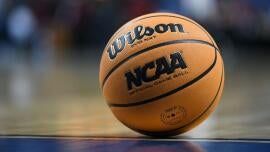
Where it gets a bit murky for the league is in the lower half, as there are five SEC teams ranked between No. 31 and 40, per Torvik. Will the conference produce an ironclad non-league run again this season that fortifies its down-ballot squads as NCAA Tournament teams?
The league should be great again, but the Big 12 and Big Ten are stocked with enough talent to cut into the SEC’s haul. If the ACC’s crop of four first-year coaches can breathe some life into that conference, it could also impede the SEC’s effort at producing another tally in the teens. Then, there’s the Big East. Will proud programs at Providence, Georgetown and Villanova continue languishing on the wrong side of the bubble?
Pay attention to the “first four out” teams of Mississippi State, Indiana, Georgia and Kansas State. Those teams would make the field if NCAA Tournament expansion were to be approved to 72 teams ahead of the 2026 NCAA Tournament. Potential expansion to 72 or 76 teams remains a possibility, and the additional teams would be at-large participants required to win a preliminary game — like what is currently called the “First Four” — before advancing into the main 64-team bracket.
Here’s our first effort at answering those questions with a summertime edition of Bracketology ahead of the 2025-26 season.
Bracketology top seeds
Since Houston is the host site of the South Regional, the Cougars would be ineligible to compete in that region. However, the Houston Chronicle reported in May that the school is looking for another local university to be the host institution, which would free the Cougars to be eligible to play inside the Toyota Center on the second weekend of the Big Dance. For now, they are slotted as the No. 1 seed in in the Midwest Region.
On the bubble
Last four in
Cincinnati
Texas A&M
Georgetown
Boise State
First four out
Mississippi State
Indiana
Georgia
Kansas State
2026 Bracketology matchups
First Four (Dayton)
(11) Georgetown vs. (11) Boise State
(11) Cincinnati vs. (11) Texas A&M
(16) LIU vs. (16) Norfolk State
(16) Montana vs. (16) Quinnipiac
West Region (San Jose)
Philadelphia (Fri/Sun)
(1) St. John’s vs. (16) Bethune-Cookman
(8) Wisconsin vs. (9) Texas
Oklahoma City (Thu/Sat)
(4) Auburn vs. (13) Abilene Christian
(5) Arizona (12) Liberty
Greenville (Thu/Sat)
(2) Duke vs. (15) Vermont
(7) Missouri vs. (10) South Florida
Greenville (Thu/Sat)
(3) Tennessee vs. (14) Arkansas State
(6) Creighton vs. (11) Maryland
South Region (Houston)
St. Louis (Fri/Sun)
(1) Purdue vs. (16) Navy
(8) Baylor vs. (9) Vanderbilt
Portland (Thu/Sat)
(4) Iowa State vs. (13) UCSB
(5) Arkansas vs. (12) Akron
Philadelphia (Fri/Sun)
(2) Kentucky vs. (15) Florida Gulf Coast
(7) USC vs. (10) VCU
Tampa (Fri/Sun)
(3) Alabama vs. (14) Towson
(6) Michigan State vs. (11) SMU
East Region (Washington D.C.)
Tampa (Fri/Sun)
(1) Florida vs. (16) Montana/Quinnipiac
(8) Marquette vs. (9) Ohio State
San Diego (Fri/Sun)
(4) Texas Tech vs. (13) High Point
(5) Illinois vs. (12) McNeese
Buffalo (Fri/Sun)
(2) UConn vs. (15) Robert Morris
(7) Oregon vs. (10) Ole Miss
St. Louis (Fri/Sun)
(3) Louisville vs. (14) Furman
(6) San Diego State vs. (11) Cincinnati/Texas A&M
Midwest Region (Chicago)
Oklahoma City (Thu/Sat)
(1) Houston vs. (16) LIU/Norfolk State
(8) Iowa vs. (9) NC State
San Diego (Fri/Sun)
(4) UCLA vs. (13) Northern Iowa
(5) Kansas vs. (12) Yale
Buffalo (Thu/Sat)
(2) Michigan vs. (15) Southeast Missouri State
(7) North Carolina vs (10) Saint Mary’s
Portland (Thu/Sat)
(3) BYU vs. (14) South Dakota State
(6) Gonzaga vs. (11) Georgetown/Boise State
NIL
Class 3A Blog: North Clayton’s Justin Murphy signs NIL deal with Phenom Elite
North Clayton athlete Justin Murphy recently announced on social media that he has signed an NIL deal with popular sports brand Phenom Elite. Murphy is listed as a 4-star recruit on Rivals and a top-15 player in the state in the Class of 2027. Phenom Elite is very popular among high school athletes. The brand […]

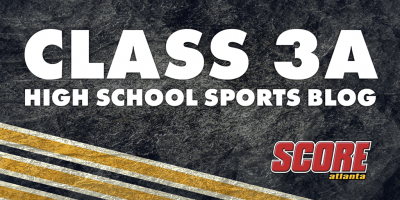
North Clayton athlete Justin Murphy recently announced on social media that he has signed an NIL deal with popular sports brand Phenom Elite. Murphy is listed as a 4-star recruit on Rivals and a top-15 player in the state in the Class of 2027.
Phenom Elite is very popular among high school athletes. The brand sells football gear such as gloves, cleats, and more. The brand has signed multiple players in the state of Georgia before, including Douglas County’s Aaron Gregory. Murphy told me nothing can be said yet about what he is going to do with Phenom Elite, but based on some of the things athletes did from last season, it is sure to be interesting.
Murphy is hyped to sign his first major NIL deal with such a major brand.
“I have been seeing the brand since the age of nine or 10, so to be a Phenom Elite athlete and rep the brand now feels good,” said Murphy. “As of right now it is the cleats, shorts, and the shirt,” he said when mentioning his favorite products.
As for Murphy, the 2027 athlete holds offers from 17 schools to play at the next level. He holds offers from Georgia Tech, Ole Miss, and Tennessee to play quarterback and from LSU to play defensive back. Murphy blew up as a sophomore at North Clayton along with teammate Kelsey Adams (who has since transferred).
Murphy has had a busy offseason, competing in many events. One of those events was the Elite 11 regional camp in Atlanta, and more can be read about that here. Murphy also runs track and was named an all-sophomore team honorable mention. North Clayton’s team also participated in multiple 7-on-7 tournaments this offseason.
North Clayton went 4-6 last season in what was arguably the most loaded region in all of 3A. With schools like Stephenson, Cedar Grove, and others in its region, North Clayton will have to rely on Murphy heavily in 2025.
The Eagles open up their 2025 schedule by taking on McDonough on August 15th. Some other notable matchups are versus Riverdale (September 5th), Stephenson (September 26th), and at Douglass-Atlanta (October 17th). The Eagles are led by Cap Burnett, who is heading into year 10 as head coach of the team. The North Clayton graduate returned to his alma mater after playing at UGA. His son Cayden Burnet is also on the team.
No official details about the contracted deal between Murphy and Phenom Elite are available at this moment.
NIL
How Topicals Cracked Beauty Storytelling in Sports
Welcome back to SportsVerse, my twice-weekly newsletter that tells stories you can’t find anywhere else about the intersection of sports, fashion, business, and culture. Powered by OffBall. When a beauty brand wants to launch a campaign to promote a new product in 2025, where does it turn? To sports, of course. In this instance, the […]
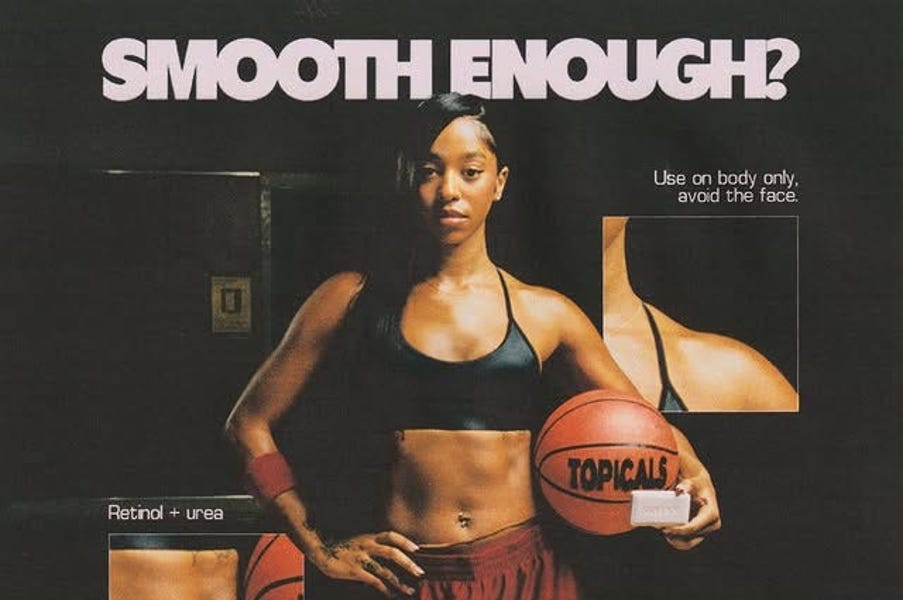
Welcome back to SportsVerse, my twice-weekly newsletter that tells stories you can’t find anywhere else about the intersection of sports, fashion, business, and culture. Powered by OffBall.
When a beauty brand wants to launch a campaign to promote a new product in 2025, where does it turn?
To sports, of course.
In this instance, the brand in question is Topicals, the popular beauty industry disruptor founded by Olamide Olowe in 2020.
The LA-based brand, which raised $10 million in a Series A funding round in 2022, quickly built up a reputation for its masterful storytelling and super-identifiable products, which double as marketing and brand discovery tools (see Topicals’ ubiquitous pink eye masks, as an example).
I’ve long seen Topicals akin to a brand like Aimé Leon Dore — equally adept in product development as it is in marketing.
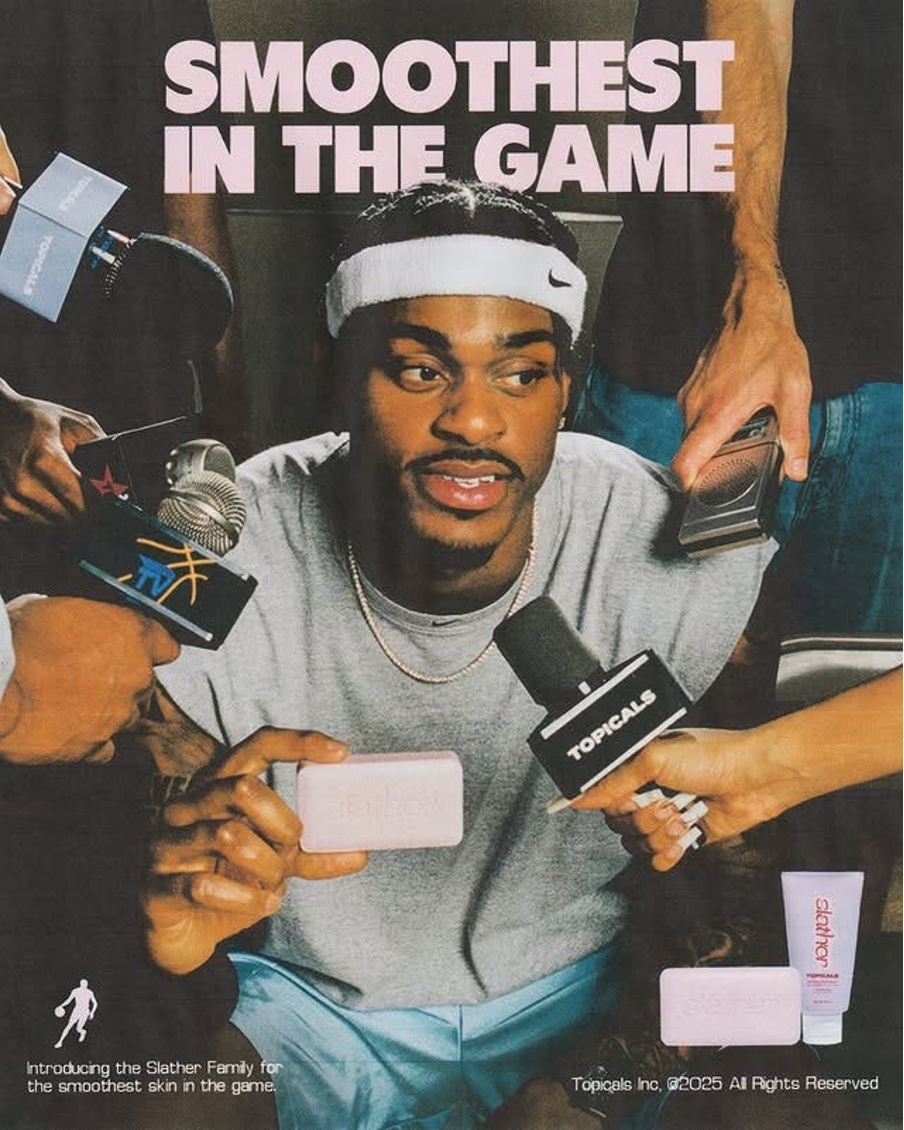
Not only Topicals’ products compelling, but the brand has an aspirational aura of cultural relevance that oozes from everything it touches, from its billboards to its digital campaigns to its sold out fashion week pop-ups to its proud connectivity to Black and West African diasporic culture to the carefully curated list of friends of the brand it frequently works with or brings on its famous influencer trips.
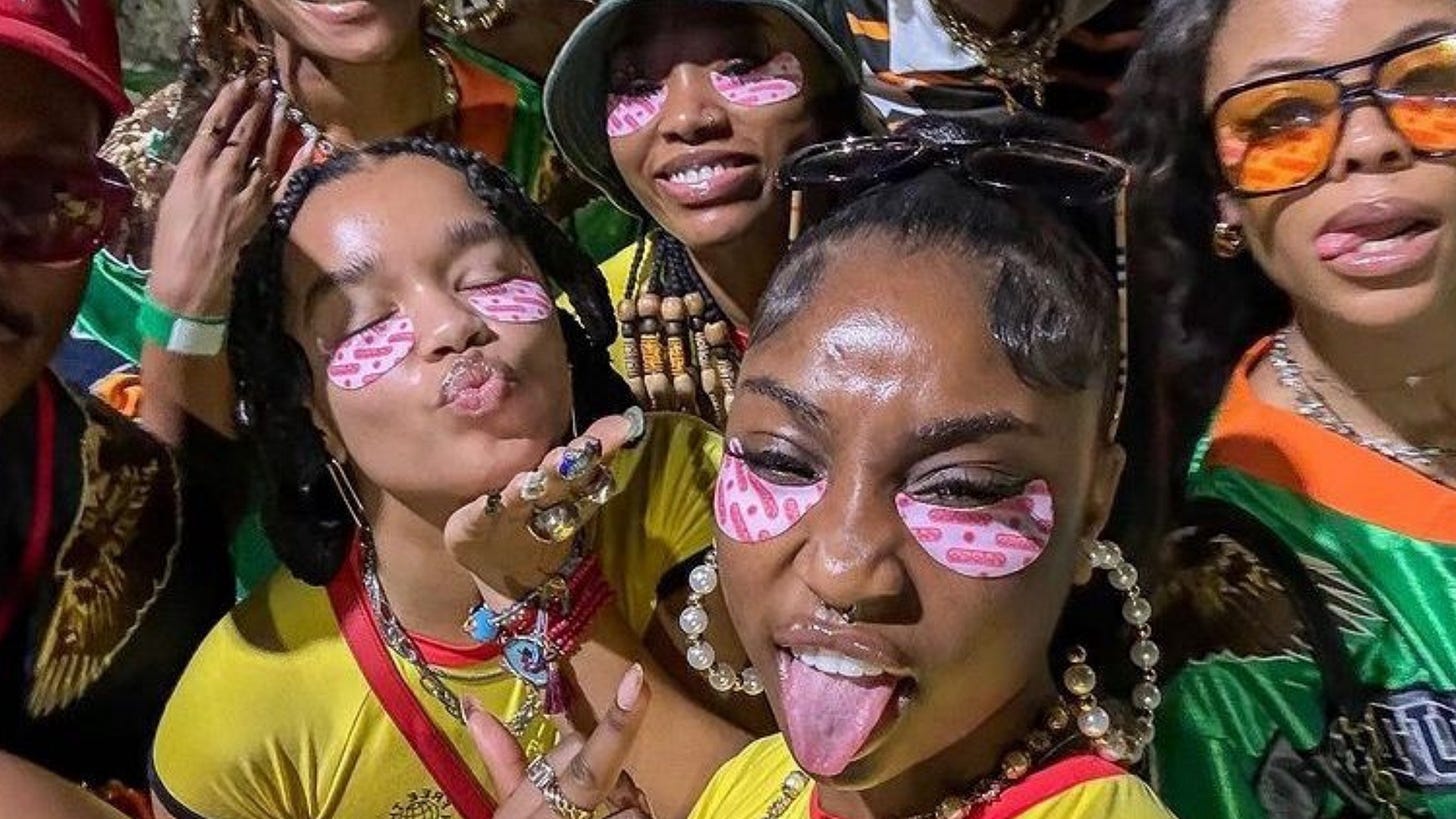
It was only a matter of time, therefore, before Topicals dipped its toes into the world of sport, which has been the single most alluring cultural arena to beauty brands over the past year.
I’m often asked by brand leaders or marketers how they can activate in sports if they can’t afford/don’t want to pay ridiculous money for an official team or league sponsorship.
This is how.
Sport provides myriad storytelling opportunities that brands can leverage in their favour. One thing that increasingly drives consumers mad is when brands are lazy. A brand knows sports bring positive associations, so they release a tacky sports-related product like a football jersey or some imitation sports equipment and think they have done their job.

But the smartest beauty and fashion brands enter sports with intention. Topicals decided to use sports to help launch its latest new product, a bar of body soap under its “Slather” product line, which is a “retinol-infused exfoliating body bar which scrubs away dry skin, texture, and bumps associated with KP, revealing softer skin after just one use,” according to the brand.
Who better to market this skincare product than professional athletes, whose skin and bodies are continually on show, being pushed, tested, scratched, bruised and stretched on the floor, night in and night out.
Topicals tapped WNBA star Lexie Brown of the Seattle Storm, already a well known fashion and beauty lover, along with Jarred Vanderbilt of the LA Lakers (a fashion cool kid in his own right), for a campaign rollout to spread awareness for the new product launch, titled Smoothest In The Game. I like both of these picks because they’re not necessarily the first basketball players who come to mind when you think of the NBA and the WNBA. But they are both players with cultural relevance and natural fits in the Topicals ecosystem.
The brand also decided to go a layer deeper, including college hooper Rian Forrester (USC Trojans) in the campaign rollout, in a post that showed before-and-after images of the product in action.

College basketball remains such a fertile marketing environment which beauty brands still haven’t seemed to fully crack effectively. Certain schools (like USC, Duke or UConn) have such avid fanbases for their women’s programmes and have teenage players who are genuine global stars and social media phenomena in their own right that it seems odd how underutilised they are as marketing partners by beauty brands.
Topicals waited to enter sports until it had a good launchpad to do so. I wish more brands — across beauty and fashion — would consider doing the same.
Sports like basketball now represent a critical marketing arena for beauty brands to compete in.
Up until recently, professional sport was a completely untapped market as far as beauty companies were concerned. All of a sudden, brands woke up to the fact that athletes were indeed some of the most compelling and versatile ambassadors when it comes to marketing the appeal and effectiveness of a range of beauty products.
Whenever I discuss the role the beauty industry plays in sports, particularly basketball, I always draw attention to Glossier, which was an early mover in partnering with the WNBA in 2020 (the league’s inaugural beauty sponsor) and later with USA Basketball Women’s National Team. The brand has activated those partnerships in thoughtful and innovative ways, which I have previously explored in this newsletter.
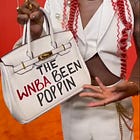
Inside WNBA Draft Night: The Biggest Sports-Fashion-Beauty Showcase to Date
Since then, there has been an influx of brands, including Sephora, Il Makiage, CeraVe, e.l.f. Cosmetics and NYX Cosmetics, following in their lead with partnerships of their own across different sports, though some of these brands have struggled to cut through the noise in an increasingly congested marketing environment.
It’s not just other beauty brands they’re up against either: fashion brands continue to flock into the sports sponsorship market, as do a range of other corporate entities, all looking to cash in on sports’ booming cultural relevance. Naturally, beauty’s role in all of this has been covered on SportsVerse in previous newsletters, too.

Beauty Brands Are Cashing In on Sports Culture
As mentioned earlier, I’m excited to see beauty brands explore the opportunities presented by NIL in the college sports landscape, in a way that goes beyond gifting athletes products. I want to see the next generation of college stars (women and men) show up in campaigns and help brands craft products and marketing efforts that align with their audiences.
This is still a space in sports which is ripe for a disruption.
I’m not surprised that Topicals is the brand at the forefront of this push.
That’s all for today, friends. Thanks for being here.
See you Thursday,
DYM
NIL
Michigan football listed as top NIL spender
The Michigan Wolverines established themselves as one of the premiere NIL spenders when they reportedly signed quarterback Bryce Underwood to a $10.5 million deal last November to get him to flip his commitment from LSU to Michigan. Now, they are being recognized for their deep pockets. According to a survey conducted by Pete Nakos of On3, […]
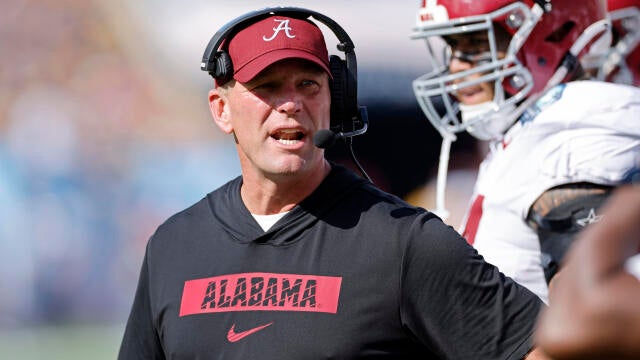
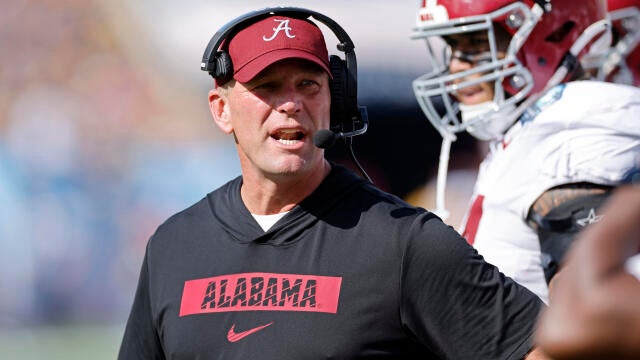

The Michigan Wolverines established themselves as one of the premiere NIL spenders when they reportedly signed quarterback Bryce Underwood to a $10.5 million deal last November to get him to flip his commitment from LSU to Michigan.
Now, they are being recognized for their deep pockets. According to a survey conducted by Pete Nakos of On3, the Wolverines are one of the top ten NIL spenders in the country. On the list, Michigan was tied for 7th with USC.
Advertisement
The Wolverines and Trojans come in just ahead of noted SEC spenders Tennessee and Auburn. The list is led by Texas, Texas Tech, Ohio State, Oregon, Texas A&M, and Miami.
Regarding the Wolverines’ spending, Nakos wrote:
“Michigan’s highest-paid player on this year’s roster is well documented. The Wolverines flipped On3’s No. 1 overall recruit from LSU in November. The quarterback inked a multi-year deal that is expected to pay out over $12 million in his career at Michigan. The Wolverines are another program that is expected to cross the $20 million threshold in 2025.”
With this type of spending, the Wolverines are able to keep themselves on the same playing field for top-end recruits and transfers. Coach Sherrone Moore can use this expanded budget to seek out more players like Bryce Underwood and Alabama transfer running back Justice Haynes.
Advertisement
The Wolverines finished with the 6th-best 2025 recruiting class, according to 247Sports. It is safe to assume the extra funds played a role in Michigan achieving that ranking by being able to offer competitive payouts to top recruits.
-

 Technology3 weeks ago
Technology3 weeks agoPet fitness and wellness trends for a healthier and happier dog
-

 College Sports3 weeks ago
College Sports3 weeks agoWAC to Rebrand to UAC, Add Five New Members in 2026
-

 College Sports3 weeks ago
College Sports3 weeks agoA new era of Dickinson hockey begins behind the bench – The Dickinson Press
-

 Motorsports2 weeks ago
Motorsports2 weeks agoWhy Cosmetics are Making Up for Lost Time in Women’s Sports
-

 Health3 weeks ago
Health3 weeks agoFlorida assault survivor shares hope for change with new mental health law
-

 Motorsports2 weeks ago
Motorsports2 weeks agoTeam Penske names new leadership
-

 Motorsports3 weeks ago
Motorsports3 weeks agoNASCAR This Week – Patriot Publishing LLC
-

 Sports7 days ago
Sports7 days agoNew 'Bosch' spin
-

 Youtube2 weeks ago
Youtube2 weeks agoBREAKING: NBA MVP Shai Gilgeous-Alexander signs the RICHEST annual salary in league history
-

 Sports1 week ago
Sports1 week agoE.l.f Cosmetics Builds Sports Marketing Game Plan Toward Bigger Goals





























